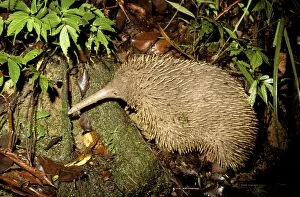Echidnas Collection
The Short-beaked Echidna, a fascinating creature found in Tasmania, Australia, is a master of survival
All Professionally Made to Order for Quick Shipping
The Short-beaked Echidna, a fascinating creature found in Tasmania, Australia, is a master of survival. With its beak halfway down into the earth, it diligently digs for food consisting solely of ants and termites. This frontal portrait captures its determination as it searches for sustenance underground. In another stunning image, an adult Echidna strolls along vegetation on Kangaroo Island. Its keen sense of detecting electrical impulses in the muscles of its prey allows it to locate ants and termites effortlessly with its beak. Nature's incredible design at work. A head portrait showcases the unique features of the Australian Short-beaked Echidna on Kangaroo Island. Its spiky exterior serves as protection while it goes about its daily activities. Picture No. 10848549 presents us with a captivating glimpse into the life of an echidna on Kangaroo Island. The intricate details captured in this photograph highlight their remarkable adaptation to their environment. Burrow AU-1261 provides shelter for a Short-beaked Echidna deep within the earth. These burrows offer safety and comfort to these amazing creatures as they rest or seek refuge from predators. With a side view shot (Picture No. 10765575), we can appreciate the distinctive characteristics that make Tachyglossus aculeautus stand out among other species. Their short nose and sharp quills are truly remarkable traits. Pictures No. 10947510 and No. 10947511 showcase more mesmerizing moments featuring these enchanting animals in their natural habitat - reminding us of nature's beauty and diversity. Lastly, Picture No. 10848375 and No. 10848374 give us glimpses into different aspects of an echidna's life - whether they are feeding or simply exploring their surroundings; every moment is worth cherishing when observing these extraordinary creatures. Echidnas continue to captivate our hearts with their unique behaviors and adaptations.









































